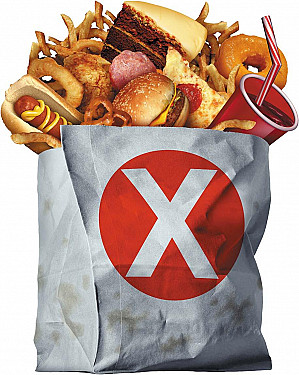Are you eating enough protein?
Men need adequate protein in their diet to combat age-related muscle loss, but many don't get enough.
- Reviewed by Howard E. LeWine, MD, Chief Medical Editor, Harvard Health Publishing; Editorial Advisory Board Member, Harvard Health Publishing

Age-related muscle loss, called sarcopenia, is a natural part of aging. After age 30, men begin to lose as much as 3% to 5% of their muscle mass per decade, and most will lose about 30% during their lifetimes.
Strength training and protein are two ways to build muscle mass and combat sarcopenia. With strength training, many experts recommend progressive resistance training, where you gradually amp up your workout volume — weight, reps, and sets — as your strength and endurance improve.
This constant challenge builds muscle and helps prevent plateaus where you start losing the gains. (Enlist a personal trainer to help you set up a detailed sequence and supervise your initial workouts to ensure you perform the exercises safely.)
Muscles also need fuel, and that's where protein comes in. The body breaks down dietary protein into amino acids, which it uses to build muscle. "Men need adequate protein in their diet to increase and maintain muscle mass as well as assist their body when it must recover from surgery or injuries," says Dr. Frank Hu, a professor of nutrition and epidemiology with Harvard's T.H. Chan School of Public Health.
Protein by the numbers
Despite this need, there's a good chance aging men don't get their optimal daily protein intake, especially if they also are cutting calories to lose weight. The Recommended Dietary Allowance (RDA) of protein is 0.8 gram per kilogram of body weight, or about 0.36 gram per pound. For a 180-pound man, that is approximately 65 grams of protein per day. According to many experts, most Americans meet and even exceed this amount. Still, some estimates suggest that approximately 10% to 25% of older adults consume less than the RDA. And aging men — especially those trying to build muscle mass — may need more protein than the guidelines recommend.
In fact, a review of current research published in the June 2023 issue of The Journals of Gerontology: Series A suggested older adults may benefit from consuming 1 to 1.6 grams of protein per kilogram of body weight daily (about 82 to 130 grams for a 180-pound man) to help increase muscle strength.
However, according to Dr. Hu, you should be careful about consuming very high amounts per day — 2 grams per kilogram of body weight or more. "Some studies have shown that too much protein is associated with an increased risk of chronic diseases and mortality," he says.
Timing your proteinResearch suggests that the body can make use of only 20 to 40 grams of dietary protein at one time. "So there is no benefit from getting most of your daily protein from one meal," says Dr. Frank Hu with Harvard's T.H. Chan School of Public Health. Instead, try to evenly distribute your protein over breakfast, lunch, dinner, and snacks. Also, to maximize muscle growth and improve recovery, consume a portion of your daily protein within 30 minutes to one hour after your strength training workout, through either a drink or a meal. |
The best sources
The first step to merging protein with strength training is to get a realistic estimate of how much protein you consume daily. "People tend to over- or underestimate how much they actually eat," says Dr. Hu. He suggests tracking your protein intake with each meal for a week to get a daily average. "Make sure to read labels and assess your protein per serving as accurately as possible, and don't guess at amounts."
Once you have a general idea of your usual intake, you can increase it as needed. Dr. Hu recommends that your protein should focus on high-quality food sources, like lean poultry, fish, dairy, and plant-based foods, such as soy, legumes, nuts, and whole grains. (Some people may need to avoid common high-protein food sources like meat, eggs, or dairy due to health concerns or dietary restrictions.)
Here are some examples of how much protein you can get from typical servings of high-quality protein foods:
- 3.5 ounces lean chicken (31 grams)
- 3.5 ounces salmon (24 grams)
- 1 cup cooked beans (about 18 grams)
- 6 ounces plain yogurt (17 grams)
- 1 cup skim milk (9 grams)
- ¼ cup nuts (7 grams)
- 1 egg (6 grams)
Another option is whey protein powder or vegan powders made from soy, peas, or brown rice. (The exact amount of protein per serving varies by brand.) Powders are a useful choice if you have trouble getting enough protein from foods. They can be added to oatmeal and smoothies, or stirred into a glass of water. "Because powders come with measuring scoops, they can help you track how many protein grams you add to your daily diet," says Dr. Hu.
Image: © Professor25/Getty Images
About the Author

Matthew Solan, Executive Editor, Harvard Men's Health Watch
About the Reviewer

Howard E. LeWine, MD, Chief Medical Editor, Harvard Health Publishing; Editorial Advisory Board Member, Harvard Health Publishing
Disclaimer:
As a service to our readers, Harvard Health Publishing provides access to our library of archived content. Please note the date of last review or update on all articles.
No content on this site, regardless of date, should ever be used as a substitute for direct medical advice from your doctor or other qualified clinician.
















